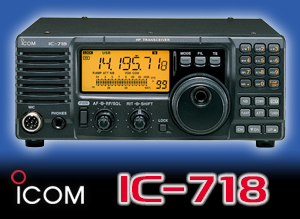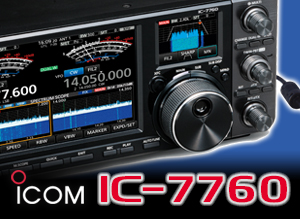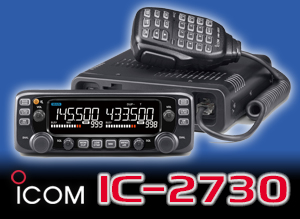Lectures
The following are lectures that took place at the RSGB Convention 2014.
 You can download some of the lectures—check the left menu under ‘Lectures’ to see available items.
You can download some of the lectures—check the left menu under ‘Lectures’ to see available items.
HF
FT5ZM DXpedition by Bob Allphin, K4UEE
Bob, K4UEE was a member of the successful 2014 FT5ZM Amsterdam Island, which was the number six most-wanted DXCC. Their story is a very interesting one and many UK stations got a ‘new one’ from their DXpedition. The cost of this DXpedition was almost half a million dollars, the sea trip across the South Atlantic was dire and participants put in a lot of their own money. Bob, K4UEE is in the CQ DX Hall of Fame and has activated 10 of the top 10 most wanted DXCC’s and has nine DXpedition of the Year awards.
TX6G DXpedition by Don Field, G3XTT
The 2014 TX6G DXpedition to the Austral Islands in the South Pacific was conceived ‘over a pint’ at last year’s RSGB Convention and shows just what a small team with all equipment hand-carried can achieve. The team made 76,760 QSOs in 12 days of operation and put many UK stations into their log.
DX Forum
An interactive discussion, with a panel of DXers and DX chasers, to both answer your questions on DXing and to discuss current hot topics around DXing. Everyone is welcome—from beginners to those on the Honor Roll.
From K3 to KX3
Inside These High Performance SDR Rigs – With Knobs! by Eric Swartz, WA6HHQ
The technical evolution of Elecraft SDR based radios and discussing what it takes to achieve their high performance.
Vertical Dipole Arrays by David Aslin, G3WGN
Ever wondered why so many beach-based DXpeditions use Vertical Dipole Arrays (VDA) nowadays? Ever wondered why they work so well? David, G3WGN, who masterminded the TX6G VDAs, will explain the theory and practice behind the HF VDA and show how you can build one from inexpensive and readily available components.
The Honor Roll
A Really Tough Ask, and Getting Tougher by Laurie Margolis, G3UML
Laurie, G3UML has been on the DXCC Honor Roll since 1977 and at the top since 1996 having now worked374 DXCC’s—all on SSB. He was inducted into the CQ DX Hall of Fame in 2013. Learn how he did it using simple, low, wire antennas and understand it is a marathon not a sprint. Topics will include how to maximise your antenna potential, when and where DXpeditions are, how to call and work it and how to extract a QSL. And those little things that can give you an edge.
HF Propagation Alphabet Soup by Dr Colin Forsyth
Dr Colin Forsyth presents on the complex interaction between the Sun and the Earth that gives rise to the highly variable and charged layer in the atmosphere known as the ionosphere. Forecasting the exact condition of the ionosphere at any given time is still a very difficult task, given our inability to forecast the input conditions from the Sun and sparse observations of the existing conditions in the ionosphere. However, the plethora of space weather indices give some indication of current conditions on a global scale, allowing basic “nowcasting” of the ionosphere and estimation of HF propagation. In this talk, Colin will discuss some of the common space weather indices, their sources and possible meanings and how a deeper understanding of these may be used to understand HF propagation through the ionosphere.
IOTA – Now and Into The Future by Roger Balister, G3KMA
As this year continues to celebrate the 50th Anniversary of the Islands on The Air (IOTA) programme, it is a great opportunity to look at what has been achieved and lift the veil on how IOTA may progress. Roger, G3KMA, the RSGB IOTA Manager, will guide us through and touch on the opportunities and challenges facing the programme.
Tristan da Cunha DXpedition by Nigel Cawthorne, G3TXF/ZD9HF
Heading to the Convention as soon as the DXpedition is over, Nigel, G3TXF will catch visitors up on what happened on the island, including the trip by boat to get there.
Dipole to Hexbeam: DX Antennas for the Solo Traveller by Nick Henwood, G3RWF
Nick Henwood G3RWF/5X1NH/9X0NH has made over 120,000 QSOs using lightweight antennas, hand-carried each trip. He will talk about his experiences and experiments in Uganda and Rwanda. Useful for travellers but also for UK operators trying to put out a good signal with a quite simple antenna.
Contest University
Contest Hints from Start to Finish by Lee Volante, G0MTN
A selection of tips and ideas suitable for newcomers to contesting, but which will also give the more experienced contest entrant something to think about. Areas covered include pre-contest planning and analysis, station design, and of course on-air operating skills development. Come and see how TV home makeover shows are relevant to contesting!
Contest Logging with SD by Paul O’Kane, EI5DI
For almost 25 years, SD has set the standard for fast, simple single-op logging in HF contests. Paul, EI5DI will show how to get the best out of it in both RSGB and other contests. SD is free and, whether you’re an experienced contester or just getting started, it’s worth seeing how effective it is.
An Overview of RTTY Contesting by Roger Cooke, G3LDI
It is intended to show beginners to the mode how to get started in RTTY (and PSK) contesting. It will be a general talk with no detailed setting up of the station. There won’t be time for that. I shall discuss what software to use, where to find RTTY and PSK, some hints and tips on setting up the equipment and macros in order to enhance their operating on datamodes.
Make the Most of Your Antenna Opportunities by Steve Knowles, G3UFY
A fairly light-hearted, very-low-mathematics look at antennas for those just coming into contesting, especially those with limited space and resources, including the briefest of introductions to modelling and Polar Diagrams. Steve will look at what different antennas do, and how to decide what you do or do not want—including at least one Old Wives’ Tale debunked. Should you compromise or specialise—or convenience vs inconvenience? By looking at some popular designs Steve will try and answer that question as well as deal with. Store-bought or homebrew and care and maintenance dealing with safety issues where prevention is better than cure.
The RSGB 80m Contests… Secrets Revealed by Graham Bubloz, G4FNL
VHF and UP
Sporadic-E by Jim Bacon, G3YLA
Jim will be bringing us up to date on the latest 2014 season of Sporadic-E and revealing the results of some new techniques to try to second guess the likely locations. He will also introduce a new item to the amateur radio community from the world of weather and propagation with a review of current research to examine the effects of climate change upon the ionosphere. Does global warming mean that DX is hotting up or is a DX Ice Age coming ?
Tropospheric Ducts: Equations and Radiosonde Data Analysis for Practical Insight by Dr Marcus Walden, G0IJZ
The presentation will demonstrate how the simple analysis of radiosonde data can enable tropospheric ducts to be identified and characterised. Knowledge of the duct parameters—e.g. depth of duct, critical angle, minimum frequency supported—can provide insight into why certain radio links worked while others did not. Case studies of recent notable tropospheric ducting events will also be presented together with propagation path loss simulations.
TransAtlantic VHF Beacons by Brian Justin, WA1ZMS
Brian, WA1ZMS will present a talk on the current efforts to span the Atlantic from North America to Europe on the 2m band. This has been a quest for many years that is akin to the “Holy Grail” of VHF propagation. The talk will cover efforts on both sides of the path, including beacons and dedicated attempts at a QSO. While greater distances have been covered over warm ocean water, the rather cold North Atlantic has been a formidable obstacle.
10 & 24GHz EME Developments by Charlie Suckling, G3WDG
Over the past few years there have been a number of advances in both equipment, operating techniques and our understanding of propagation effects. As a result of these, it is now possible to make EME contacts on these bands with considerably smaller dishes than have been needed in the past. This talk will aim to describe these improvements and some of the results achieved, and hopefully lead to an increase in EME activity on these bands!
Mapping our Galaxy from the Backyard by Brian Coleman, G4NNS
Brian will show how with a 3.7m back yard radio telescope, also used for EME, it is possible to map parts of our galaxy picking out features in 3 dimensions by using the radiation from Neutral Hydrogen on 1420MHz and using the Doppler shift due to the relative motion of the different components of the galaxy to identify and triangulate them. This has been a collaborative project with many of the nearly 1000 observations being made by remote controlling the telescope over the internet to give folk interested in Radio Astronomy the opportunity to gain some live observing experience.
Trends in the Nordic Activity Contest by Verner Topse, OZ5TG
Nordic Activity Contest is one of the longest-running VUSHF Amateur Radio Contests in the world. The contest, which runs on Tuesdays and Thursdays, has been held every month since its inception in 1956. Nowadays there are classes from 50MHz to the highest amateur bands, and the participants are primarily from the Nordic countries, but also open classes attract many participants from many European countries including UK. Over the years there have been submitted more than 20.000 logs with nearly 500.000 QSO’s. OZ5TG has been active on VUSHF since 1968, and has been manager for this contest since 1996. He will focus on the trends that can be seen from more than seventeen years of contest logs, and on measures to support and improve the activity on, and usage of the VHF – SHF bands.
Developing 70cm by Richard Staples, G4HGI
Richard, G4HGI include up to date details on the beacons and show that the RSGB does great work. By detailing the beacons that are on the air at the time of the convention and, crucially, about those that will be kitted up with JT65. It’s fair to say that JT65 operation on 70cm is a novelty—at the moment.
My First 100 Countries on 144MHz by John Regnault, G4SWX
2014 is the 50th anniversary of UK amateurs communicating with others around the world by bouncing signals off the moon. In those 50 years amateur technology has developed to the point where moonbounce has become a common activity with many thousands of active stations across the world. On 144MHz there is now significant activity almost every day 24 X 7 with many DXCC entities being activated by expeditions. In the talk John, G4SWX will review some of the history, discuss the propagation challenges and some of technical issues highlighting how with digital, JT65 transmissions, moonbounce is now possible from relatively small 144MHz stations. John will describe how he has managed to work over 100 DXCC countries and all 50 US States on 144MHz since coming back on the air three years ago after a break.
An Introduction to Moonbounce – the missing chapters: Moonbounce on the Magic Band by Peter Taylor, G8BCG
From 100W and a 7ele to kilowatts and multi Yagi arrays this will be a light hearted introduction to the myths, mysteries and magic of EME on six metres.
146-147MHz: A New Frontier of Amateur Innovation by John Regnault, G4SWX
Towards the end of March this year Ofcom published a document: “Responses to the Call for Input and Consultation on next steps of the release of spectrum within the frequency range 143 MHz to 169 MHz”. Ofcom proposed “to permit temporary access to 1 MHz of this spectrum (146 to 147MHz) for Amateur Radio use, until such a time as it is needed by Business Radio or other services.” … “Amateur Radio use of this frequency will be on a non-protection/ non-interference basis and will be subject to some geographical restrictions to ensure that there is no interference to neighbouring countries. We propose that the authorisation will be implemented by an individual Notice of Variation (NoV) to the Amateur Radio licence.” In the talk John, G4SWX, the RSGB VHF Manager, will review the restrictions imposed by the NoV and highlight the challenges for experimentation and innovation that become possible with this new spectrum. John will solicit feedback from the audience leading a discussion on other ideas and possible amateur use of the new spectrum. Although the focus of this talk is the release of 146-147MHz to the amateur service the technology aspects of his talk will be relevant to digital communications on any of the VHF, UHF and microwave bands.
The Anglian 144MHz Transverter by Sam Jewell, G4DDK
Sam Jewell will follow up last year’s talk on the Nacton 70MHz transverter design with a talk on the design of the low cost, high performance, Anglian 144MHz transverter.
Technology
Intro to SMD Workshop by Dave Powis, G4HUP
This presentation is a follow-on from the introductory talk on Surface Mount assembly given last year. The first part of the presentation will be a re-cap of last year’s material, for those who were not able to be present. However, the main focus of the talk will be to demonstrate that reflow soldering is practically and economically feasible in the shack environment. Dave, G4HUP will be discussing the equipment needed, costs and sources, and will conduct a demonstration. There will be practical workshop sessions following through the rest of the day, where you can assemble one of my introductory SMD kits, such as the Panoramic Adaptor Tap or Latching Relay Driver, and use the reflow oven. See http://g4hup.com for more details on these. Alternatively, bring along an SMD project you want to put together, but didn’t feel able to at home. Workshop sessions will be limited to approx 1 hour per person, to ensure as many as possible get the chance to have a go.
Datamodes Start-up by Mike Richards, G4WNC
Mike, G4WNC takes a look at today’s datamodes and provides practical advice on how to get started. In addition to running through the popular datamodes, Mike will show you the equipment you need along with some operating tips. Free fact sheets will be available at the end of the talk.
The DG8SAQ Vector Network Analyzer by Jan Verduyn, G5BBL
This will be a brief introduction to basic S-parameters and relationship to practical shack measurements like VSWR, Gain or Attenuation and Phase shift with details on the development of the DG8SAQ VNWA hardware. It will include a demonstration of the VNWA Application Software and some practical basic measurements as well as some more advanced VNWA applications, like measuring Allan Deviation of GPS Disciplined Oscillator and a Rb Frequency Standard and Distance to Fault Measurements. He will finish with some honest advice on what instrument best meets the particular needs of various radio amateur interests, where his suggestions will range from SWR Bridges like MFJ Analyzer, the MiniVNA to the DG8SAQ VNWA and two other instruments followed by general discussion.
ATUs, Transmatches or Aerial Couplers – Call them what you will by Peter E. Chadwick, G3RZP
This lecture examines the principles behind the tuning units for antenna matching, and looks in a non-mathematical way at the various approaches that have been used over the years, such as the Z match, L, Pi and T circuits as well as the classical tuned circuit. The problems inherent in a large variation in working Q when matching over a large impedance range are examined, and some of the methods of impedance measurement are considered, together with their limitations. Consideration is also given to the problems that can exist with baluns, especially when operating under high SWR conditions.
IQ + XT SDR Transmitter by Alex Artieda, HB9DRI
The IQ+XT (transmitter) was presented at the EME conference in France and here, Alex, HB9DRI will present the complete suite IQ+ receiver and IQ+XT (Transmitter) as SDR for Weak Signal Communications. He will focus on the way he designs the radios and how software like LTSpice help him to simulate several parts. I plan to include also something related to the side band noise and how the IQ+XT compare with commercial VHF transmitters.
Basic SDR Techniques by Simon Brown, G4ELI
This is an introduction to SDR software, we’ll be following the processing required from the antenna through to the monitor and the speakers. The talk shows the basic processing blocks, it’s not too technical and no SDR experience is required. Covering: Fast Fourier Transform (FFT), Numerically Controller Oscillator (NCO), Half-Band decimators, SSB demodulation.
Emerging EMC Threats by John Rogers, M0JAV
The RSGB EMC committee is actively investigating emerging threats which cause interference to the radio spectrum. Ironically many are from either new broadband data communications or from green energy devices – both of which aim to improve our lot. This presentation is an update on results so far covering Solar PV, Wind Farms, LED Lighting, xDSL and PLC. They will show typical spectra for the various items along with sound recordings to help people identify these new sources of interference. Where mitigations are known they will outline them. They hope amateurs will be encouraged to join in with collecting data on the interference so they can take appropriate action like identify mitigation, influence standards or lobby regulators based on a better body of evidence.
Advanced SDR Techniques by Simon Brown, G4ELI
Targeted at the SDR enthusiast, this talk covers some of the advanced concepts found in today’s SDR software. Covering: Supporting many SDR hardware platforms, Noise Reduction, Efficient coding, Enhanced waterfall resolution, Pseudo stereo, User experience, Automatic Notch Filter, Data recording and playback, Data analysis and feature extraction.
Modern Frequency Synthesizers by Andy Talbot, G4JNT
Andy, G4JNT will be covering the basics of integer and fractional-N frequency synthesis techniques. How these have been incorporated into some quite versatile single chip solutions that can be used for a variety of purposes, some offering near continuous tuning from MHz to GHz. The results of some actual hardware designs will be shown, and the practicalities of using the chips in actual situations. Also limitations and some of the pitfalls that can arise.
UKHASNET: Technology and Methodology by James Coxon, M6JCX
Working datamodes with the Pi by Mike Richards, G4WNC
Mike, G4WNC shows you how to get your Raspberry Pi doing something useful in the shack. This is your chance to get out that Raspberry Pi that’s been sat in the drawer and make it do something useful. Free fact sheets will be available at the end of the talk.
Wider World
World War 1 Communications by Elaine Richards G4LFM
What role did radio amateurs play in World War One and what significance did their knowledge have on society at the end of the war.
Amateur Radio Volunteer for the Boston Marathon by Harold Kramer, WJ1B
Harold, WJ1B was one of the amateur radio volunteers at the ill-fated Boston marathon in 2013. he tells the moving story of the events leading up to the explosions near the finish line and how amateur radio volunteers were able to help.
Activating Wainwrights by David Stansfield, G0EVV
Amateur Radio Software Developers Forum run by Michael Wells, G7VJR
A workshop and show-and-tell session for programmers developing logging software, data modes, computer control systems, SDR, remote control and other innovations in radio software. All welcome. Developers are advised to contact Michael G7VJR in advance to participate
FUNcube by David Bowman, G0MRF
Following the successful launch back in November 2013, well over one million packets have been uploaded to Data Warehouse. As the project goes from strength to strength, AMSAT UK members will recap on the progress so far and what the project still wants to achieve as well as look at future projects.
Setting up a Beginner’s Contest Station by Don Beattie, G3BJ
Operating from Shutter Telegraph Positions by John Wakefield, M0XIG
John, M0XIG will speak about operating a special event station at the locations of all the shutter telegraphs on the Plymouth extension from Chalton in Hampshire to Mount Wise at Plymouth in Devon—a total of 22 stations which took six years to complete. So it is about operating this as a single operator and problems along the way. The Telegraphs on the Plymouth Extension were built in 1806 and were manned operationally until 1816.
Youngsters on the Air by YOTA team member
——————————
The RSGB Convention 2014 was generously sponsored by Martin Lynch & Sons











